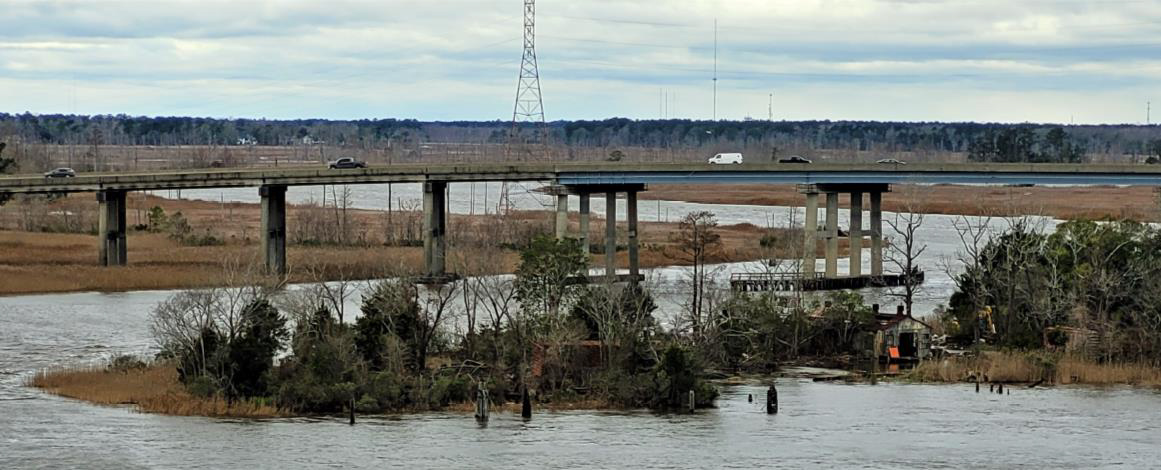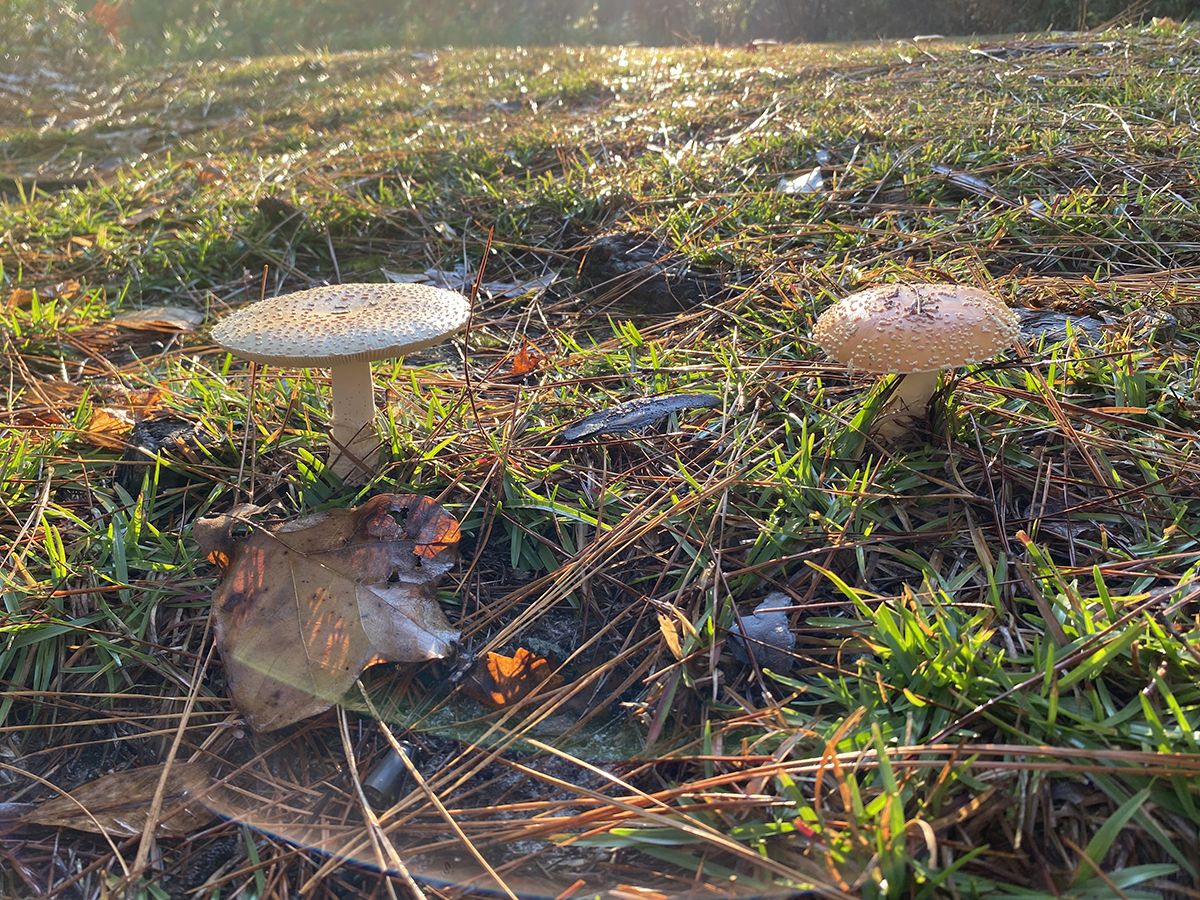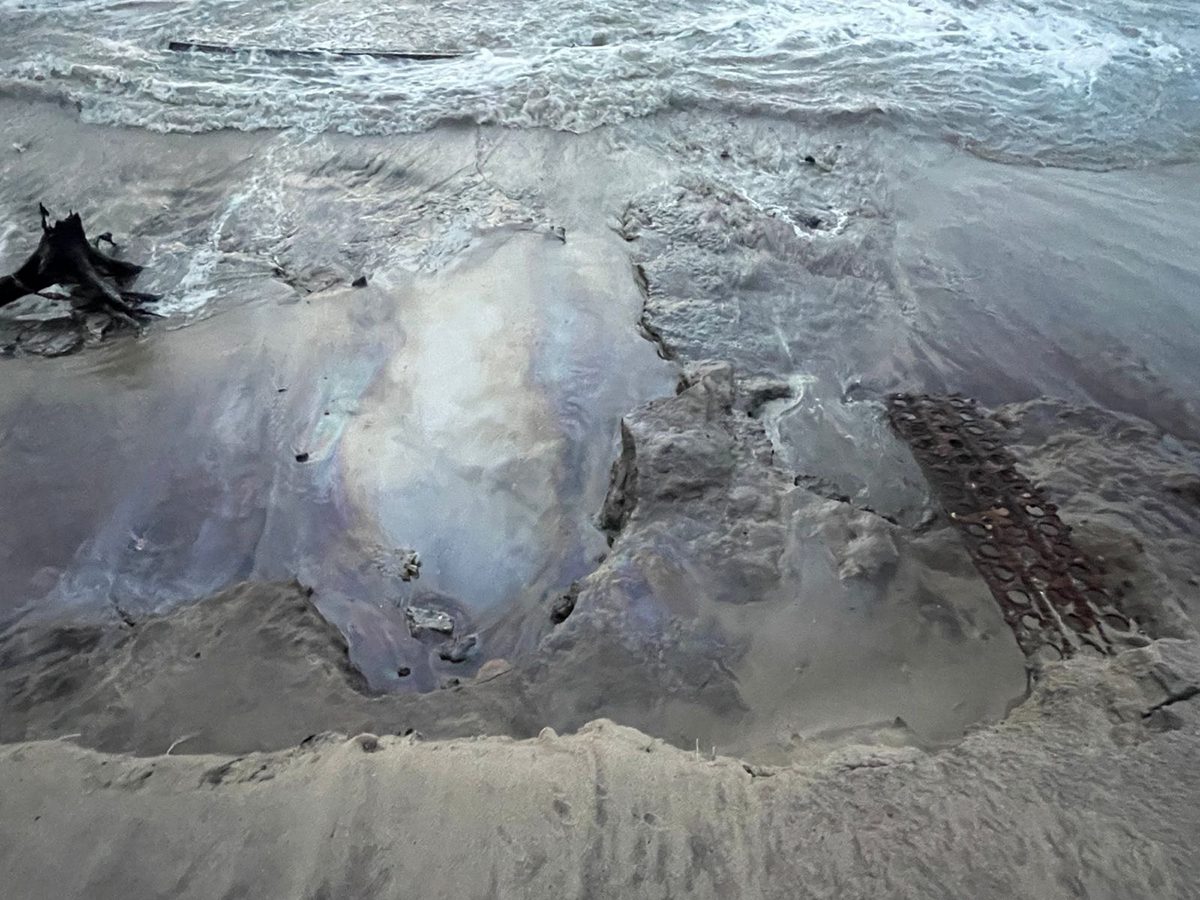
BUXTON — A newly emerged area of petroleum pollution on Buxton Beach will be addressed by a U.S. Army Corps of Engineers-contracted response team, the Corps’ Savannah District announced late Wednesday.
After residents here again reported the presence of fuel sheen and odors, as well as the appearance of long-buried infrastructure and debris on the shoreline after a storm late last week, Col. Ron Sturgeon, the Corps district commander, visited the site Tuesday with Cape Hatteras National Seashore Superintendent Dave Hallac.
Supporter Spotlight
“We are committed to the health and safety of the community,” Sturgeon stated in press release Wednesday. “The beach environment is difficult and changes from day-to-day, but we are dedicated to finding the petroleum contamination and removing it.”
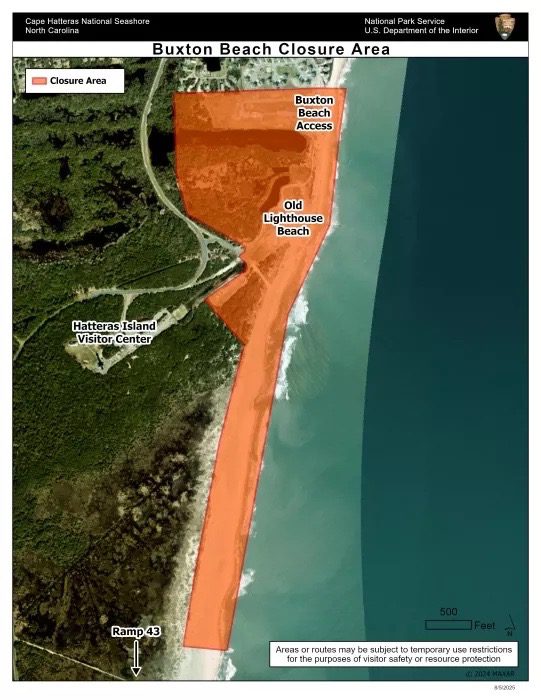
On Aug. 1, the National Park Service temporarily closed Old Lighthouse Beach lifeguard area and a 0.3-mile section of beach extending south from the southern end of Buxton village to about 0.4 miles north of Ramp 4, an area adjacent to what is officially known as the Buxton Formerly Used Defense Site.
The U.S. Navy, followed by the Coast Guard, operated bases on Buxton Beach from 1956 until 2010. Buxton Beach Access is at the south end of Old Lighthouse Road.
Hallac said the meeting with Sturgeon and members of the Corps’ response team was “very productive.”
“We had an opportunity to inspect the site and discuss next steps,” he said in an Aug. 5 text, responding to a question from Coastal Review. “They will be providing public information as they continue to evaluate options and advance a plan, but I am confident that they are moving very rapidly, as fast as they can, and are committed to mitigating the current threat to the environment.”
Supporter Spotlight
The contamination and debris problem had first revealed itself after a series of coastal storms in late summer 2023. Those storms caused severe erosion along the shoreline at Old Lighthouse Beach, exposing chunks of fuel-soaked peat and large pieces of buried infrastructure left behind from the Navy and Coast Guard bases. As a result, the beach was closed for safety and health reasons from Sept. 1, 2023, to June 12, 2025.
Since 1991, the Corps had been responsible for remediating the former Navy property as one of the Defense Department’s Formerly Used Defense Sites, or FUDS, under the Defense Environmental Restoration Program. Over the years, the program had removed tons of polluted soil and set up numerous monitoring wells.
After the 2023 exposure of petroleum contaminants on the beach, the Corps conducted numerous investigations but was unable to isolate a direct source. Still, the FUDS office took responsibility for removal of tons of soil with evidence of petroleum. Although its authorization does not include removal of buried infrastructure, the Corps’ contractor was permitted to haul away tons of debris, including concrete, pipes, cables and wires, that had to be removed to access the contaminated soil.
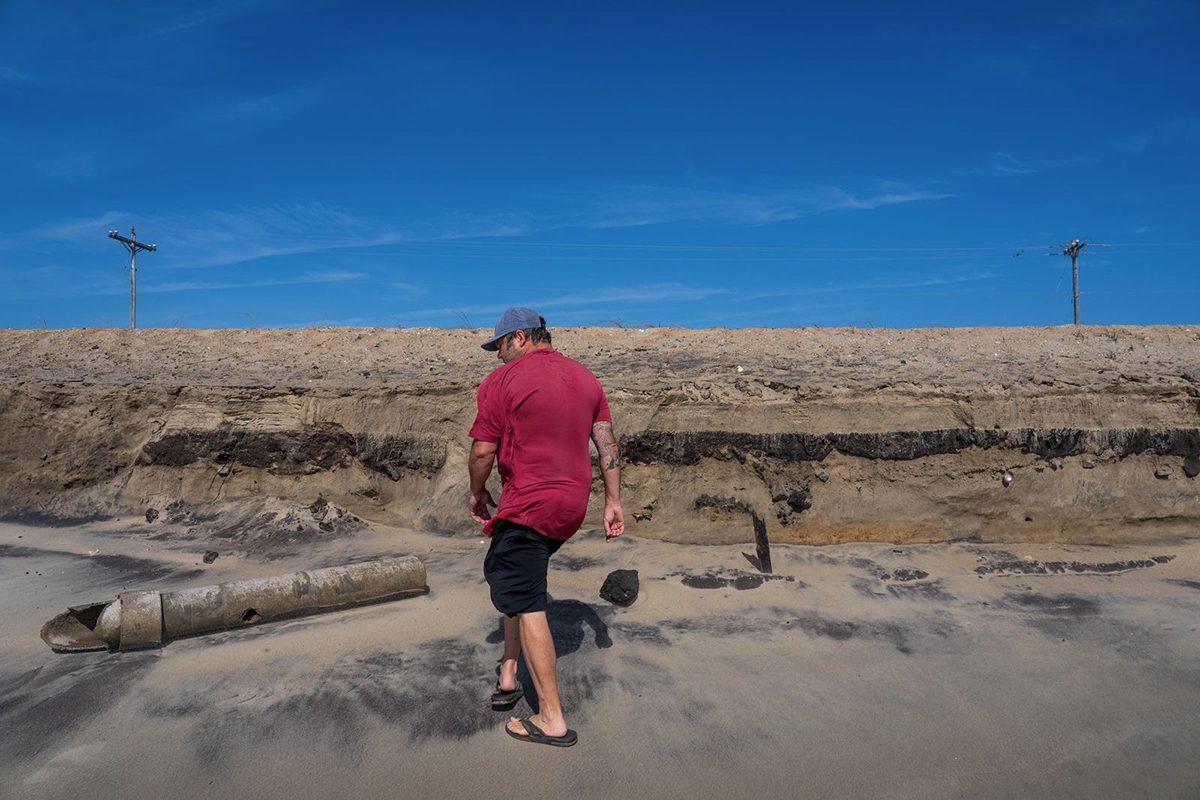
Meanwhile, the Coast Guard had conducted a Comprehensive Environmental Response, Compensation and Liability Act, or CERCLA, investigation at the Buxton Beach site. According to an October 2024 press release, the Coast Guard Civil Engineering Unit Cleveland initiated the site investigation in August 2023 to identify any potential contamination resulting from operations at Old Group Cape Hatteras between 1982 and 2013, when the base was abandoned.
The final CERCLA site inspection report, released in August 2024, includes details of vast amounts of herbicides, pesticides, wastewater, petroleum and various chemicals spilled, leaked and deposited at the site over the years, by either, or both, the Navy and the Coast Guard.
One draft assessment of tests performed in 2011 at the fueling station found certain chemicals, such as PCBs, at levels that were deemed above acceptable for residential or laboratory detection limits but below permissible for commercial/industrial sites. Other contaminants, such as arsenic and certain metals, were determined to be naturally occurring. Even evidence of per- and polyfluoroalkyl substances, or PFAS, at the site was considered acceptable because it’s normally found in sea spray.
But the passage of time, the overlapping pollutants from both bases, in addition to regulatory complexity, apparently has satisfied the Coast Guard’s responsibility for the current environmental condition, from its point of view.
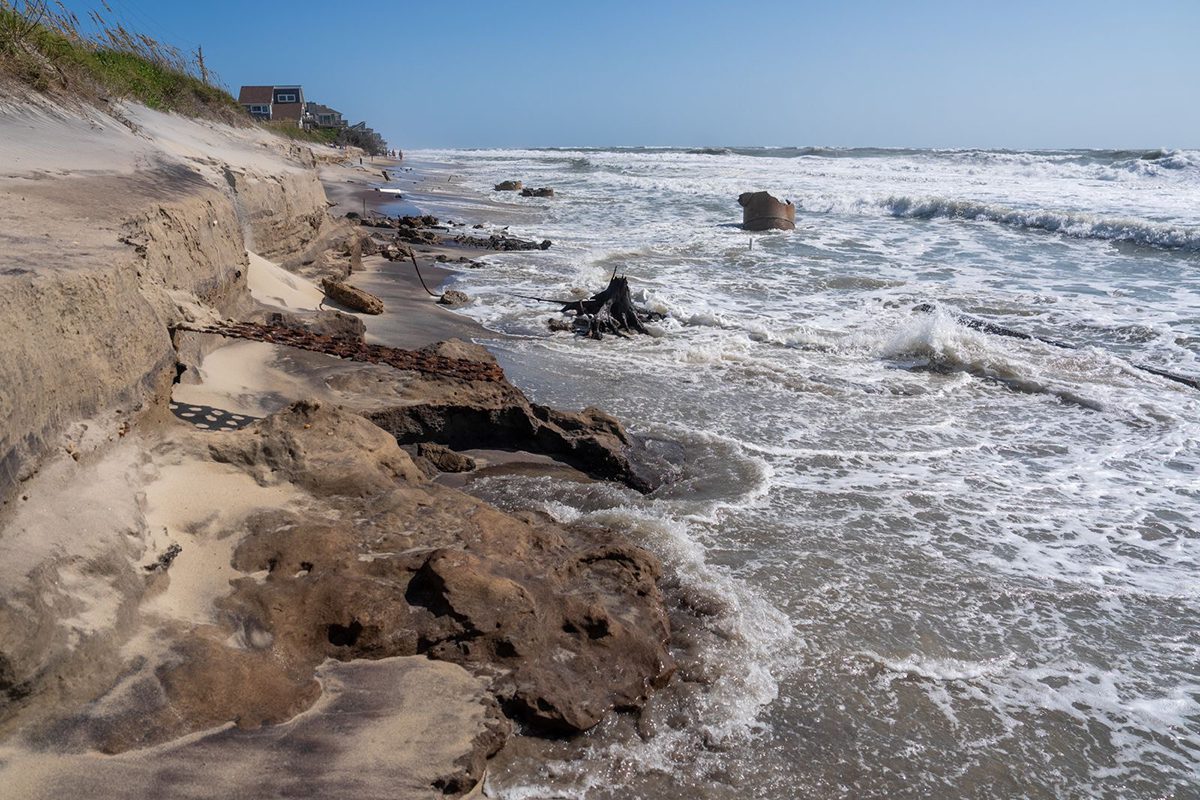
“In accordance with the U.S. Code and U.S. Environmental Protection Agency regulations the CERCLA investigation sought to determine actionable remediation levels associated with volatile organic compounds, semi-volatile organic compounds, heavy metals, and chlorinated solvents,” the Coast Guard said in an Oct. 4, 2024, press release. “The investigation findings concluded that there are no actionable levels of these contaminants resulting from past Coast Guard operations at the sites.”
Coast Guard officials did not respond by deadline to an email asking whether the Coast Guard had plans to remove any remaining infrastructure that may be associated with Group Cape Hatteras. Both the Navy and the Coast Guard were obligated to remove all their buildings when they left the site, according to the park service, which owns the land.
Brian Harris, a Buxton resident and a founding member of the Buxton Civic Association, said that the latest petroleum was evident on the beach on the morning of Aug. 1, along with a portion of the remains of what some believe was from the Coast Guard’s wastewater treatment infrastructure. As typically happens on the beach, the exposed pollution and debris was soon recovered by sand, he said, and could be uncovered again at any time.
But unlike the initial incident in 2023, Harris said he has total confidence in the Corps’ FUDS team and Sturgeon, whom he can now call directly to discuss concerns.
“A year ago, we were screaming and sending emails to all our congressional representatives and senators,” he said. “And we have contacts now.
“The Army Corps of Engineers isn’t going to tell you what they’re doing until they do it,” he continued. “But (Sturgeon) was here, and they’re working on a plan right now. At this point, it’s light years above where it was last year.”
The Corps’ contracted response-action team will arrive as early as next week, the Corps said in the press release, and will continue to monitor the site conditions to determine the appropriate actions, including containment with oil-absorbent booms.
“The Savannah District will concurrently mobilize equipment and personnel to excavate and remove petroleum-impacted soil from the beach and dunes,” it said. “These actions will not affect the upcoming petroleum comprehensive soil and groundwater sampling that begins in September/October 2025.”




